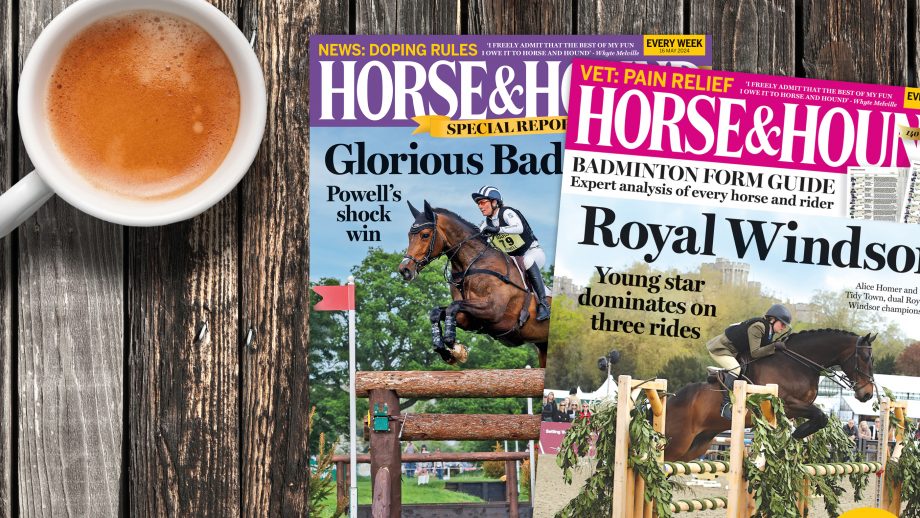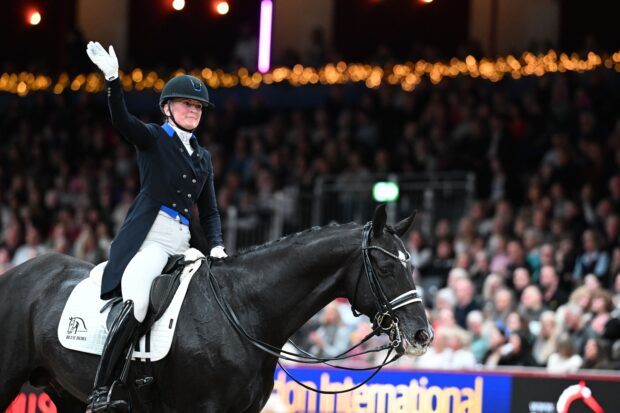A trial of making the double bridle optional up to CDI3* level, observing horses before they enter at A, and giving judges buttons to alert each other of potential issues are among proposals being discussed in dressage.
A session at the FEI Sports Forum (31 March–1 April) was dedicated to reviewing the work of the FEI’s dressage strategic action planning working group, formed this year.
The group, chaired by former US Dressage Federation president George Williams and including six-time Olympian and trainer Kyra Kyrklund, German team coach Monica Theodorescu and British medallist Gareth Hughes, has been tasked with reviewing the sport and developing a plan. This will be put to the FEI dressage technical committee and coincide with the full dressage rules revision next year.
FEI director for dressage, para dressage and vaulting Ronan Murphy moderated the session and gave an overview of the sport’s current position.
“We all know that we’ve been under this very intense spotlight. It’s important to highlight the areas of criticism; there’s the general sentiment that the sport is not in a trustworthy place and we have lost confidence,” he said.
These areas under scrutiny are training methods, judging and scoring, and “specific high-profile incidents often including some of our top athletes” – and that there have been calls for “much more decisive action to be taken” to address the concerns.
Mr Murphy said there has been a suggestion that horses competing at the top level of dressage are younger than has previously been the case, but that this is not correct. He said that of the approximately 5,000 FEI-registered horses and ponies, the percentage of eight-year-olds competing at grand prix level is “incredibly small”, and last year this was 12 horses.
Eight focus areas are being “prioritised” by the working group including judging, tack and equipment, horse health and wellbeing, and the warm-up area and stewards. Mr Murphy presented a summary of suggestions across these areas, gathered from various stakeholder meetings, to be considered by the group.
In judging, these include adding a rideability score to reward good riding, making the judges’ comments public, introducing a button for judges to alert one another when concerns arise over the competency of the combination, and observing combinations before they enter at A – an “an area where horses can become tense before starting the test”.
Other ideas included minimising horse stress levels and reducing noise such as clapping during the test, holding a trial period for giving riders a choice over the use of the double bridle up to and including CDI3* grand prix level, standardising the noseband across all grand prix classes regardless of choice of double or snaffle bridle, and cleaning foam from the horse’s mouth before entering the arena or during the warm-up if requested by the FEI official.
“Many of these initiatives are to protect our athletes because the criticism that’s received at the moment sometimes doesn’t truly reflect what is happening, and it’s important to be completely transparent,” said Mr Murphy.
Mr Williams added that the group’s discussions have been “very varied” and at this stage no conclusions have been made.
The members of the working group, except Gareth who was unable to attend, took part in a panel discussion on questions around topics including judging, public perception, training and stewarding.
When asked about double bridles and the potential for the suggested trial, Mr Williams said it was important to say “we are not making recommendations as a group, we each have our own opinions”.
Ms Theodorescu said “we don’t want to promote the snaffle to be used just for the purpose of getting higher marks” and that problems could arise such as horses being ridden more strongly at home in the snaffle.
“This could lead to other problems that we don’t want to see. We have to be careful with implementing something that might look good to the outside, and we might get positive press for a moment,” she said.
In a follow-up press briefing, FEI secretary general Sabrina Ibáñez said it is hoped “concrete proposals” will be established by the FEI General Assembly in November.
The dressage European Championships take place in August and when asked whether anything new could be implemented by then to help with the sport’s image, Sabrina said if there are any “best practices” that do not necessarily affect rules and regulations, these will be announced.
- To stay up to date with all the breaking news from major shows throughout 2025, subscribe to the Horse & Hound website
You may also be interested in:

FEI sets out next steps as dressage seeks to restore public’s trust

Dressage groups debate welfare and public trust, raising more questions than answers

Subscribe to Horse & Hound magazine today – and enjoy unlimited website access all year round




